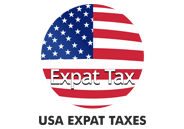When it comes to retirement accounts like IRAs and 401(k)s, the IRS has specific rules and guidelines to ensure these tax-advantaged accounts are used for their intended purpose – funding your retirement. If you don’t follow the rules, you may face penalties and additional taxes, which is where IRS Form 5329 comes into play.
Form 5329, officially titled “Additional Taxes on Qualified Plans (Including IRAs) and Other Tax-Favored Accounts,” is used to report and pay any additional taxes owed on certain distributions or excess contributions from your retirement accounts. Understanding when and how to use this form is crucial to avoid costly penalties and ensure compliance with IRS regulations.
So, when might you need to file Form 5329? Here are some common scenarios:
Early Withdrawal Penalties
If you take a distribution from your IRA, 401(k), or other qualified retirement plan before age 59½, you’ll generally owe a 10% early withdrawal penalty on the taxable portion of the distribution. This penalty is reported and paid using Form 5329.
Excess Contribution Penalties
Contributing more than the annual limit to your retirement accounts can result in a 6% excess contribution penalty each year the excess amounts remain in the account. You’ll need to use Form 5329 to calculate and pay this penalty.
Required Minimum Distribution (RMD) Penalties
Once you reach a certain age (usually 72 for most retirement accounts), you’re required to take minimum distributions each year. Failing to take your full RMD can result in a 50% penalty on the amount not withdrawn, which is reported on Form 5329.
Prohibited Transaction Penalties
Engaging in certain prohibited transactions with your retirement account, such as borrowing from it or using it as collateral for a loan, can trigger additional taxes and penalties that must be reported on Form 5329.
also read: Tax Filing Obligations for U.S. Citizens and Residents Abroad
While these are some of the most common reasons to file Form 5329, there are several other situations where this form may be required, such as:
- Excess accumulation penalties for not withdrawing enough from your retirement accounts during your lifetime
- Early distributions from an ABLE account (tax-advantaged savings account for individuals with disabilities)
- Distributions from Coverdell Education Savings Accounts (ESAs) that weren’t used for qualified education expenses
Completing Form 5329 can be complex, as it involves multiple parts and calculations based on your specific situation. You’ll need to provide information about the type of retirement account, the amount of the distribution or excess contribution, and any exceptions or waivers that may apply.
Depending on your circumstances, you may be able to claim exceptions to the early withdrawal penalty, such as for certain medical expenses, qualified higher education expenses, or if you’re receiving distributions as part of a series of substantially equal periodic payments (SEPP).
It’s important to note that Form 5329 is not filed separately – it must be attached to your individual tax return (Form 1040 or Form 1040-SR) when you file. Any additional taxes owed as reported on Form 5329 must also be paid with your tax return.
If you’ve taken distributions from your retirement accounts or made excess contributions, it’s essential to carefully review the rules and determine if you need to file Form 5329. Failing to report and pay the required additional taxes and penalties can lead to even higher penalties and interest charges from the IRS. While Form 5329 may seem daunting, working with a qualified tax professional can help ensure you’re fully compliant with IRS regulations and minimize any potential penalties or additional taxes. By understanding when and how to use this form, you can avoid costly mistakes and keep your retirement savings on track.
